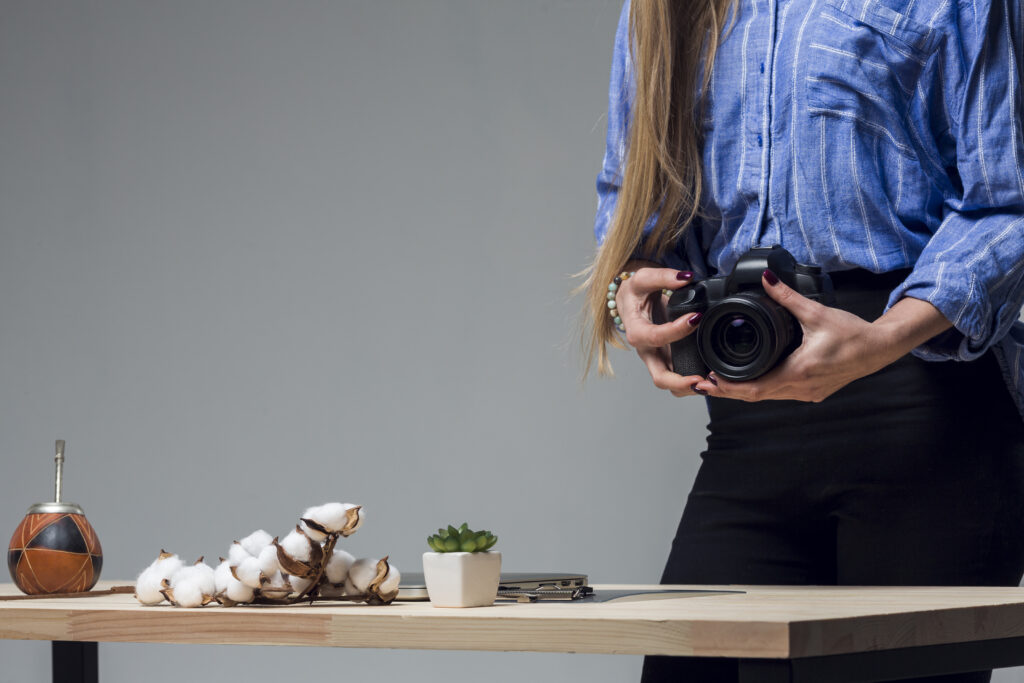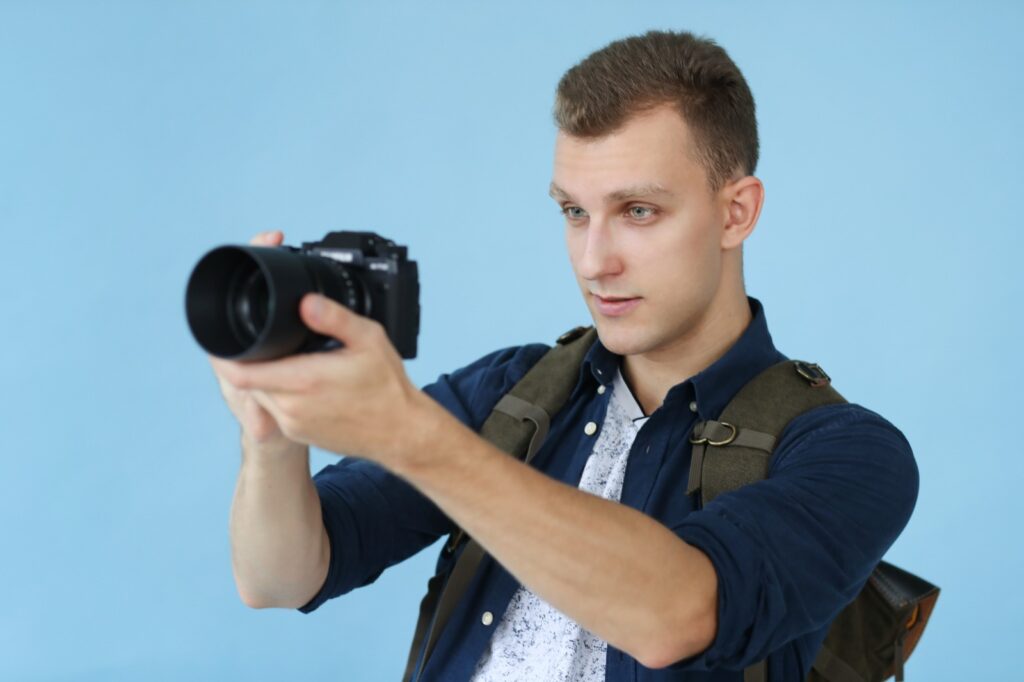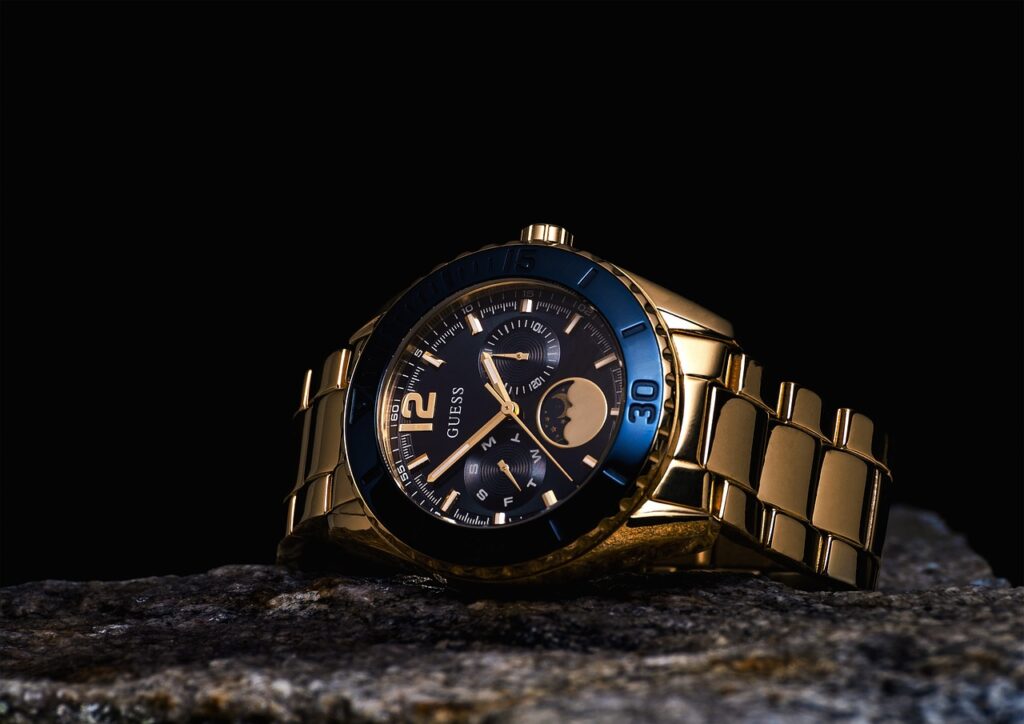Product photography is one of the best forms of art. By capturing images you can represent your products in their best way to casual viewers. A strong visual presence can improve the health of your company and increase its value.
It will create a sense of professionalism and build trust and relationships. Product photography can bring your product to life and give it distinction. Product photography is a useful trick to attract customers and level up your sales.
Without quality photos, even the best products can go unnoticed. If you understand effective product photography, it can set you apart from competitors. In this article, I’ll share with you some important techniques to enhance your product images. Let’s dive in deeper.
What is Product Photography?
Product photography is the art of capturing high-quality images that showcase products in their best light. It’s not just about snapping a quick photo, it is about highlighting every detail to make the product irresistible.
When you’re shopping online for a new gadget, you come across two listings: one with a clear, well-lit photo showing every feature, and another with a blurry-lit image. Most likely, you’ll choose one with a professional photo. That’s the power of good product photography.
Product photography is about presenting your products in a way that makes potential customers. It’s a blend of technical skill and creativity that aims to make products look as attractive as possible.
Main Goals of Product Photography
Product photography is more than just snapping pictures of your products. It’s about creating images that captivate and convert. Some of the main goals of the product photography are shared below. Let’s take a closer look at them.
Showcase Your Products in Their Best Light
High-quality photos highlight your product’s features and details. Proper lighting and angles can make a simple item look extraordinary. If you invest in better lighting, your products will look more attractive, and sales will also start rising.
Create a Strong First Impression
First impressions are very necessary. A striking photo grabs attention and encourages potential customers to learn more. In the crowded online marketplace, a compelling image can make someone stop scrolling and consider buying your product.
Enhance Your Brand Identity
Consistent, and professional photos reflect your brand’s personality. Whether your brand is fun, elegant, or rugged, your images should convey that vibe. In this way, you can improve the brand value of your business.
Increase Online and Offline Sales
Clear, and detailed photos help customers understand what they are buying. This clarity reduces hesitation and helps to bring confidence, leading to more sales both online and offline too.
Stand Out in a Competitive Market
Quality product photography sets you apart from competitors. When your products look better, customers are more likely to choose yours over others. In this way, you will be able to stay ahead of your competitors.
Provide Accurate and Honest Representation
Honesty in photos builds trust. Show your product as it truly is to meet customer expectations. This transparency will help to fulfill your customers’ satisfaction. If they get what you are showing them, you will always end up with return sales.
Convert Casual Viewers into Loyal Customers
If the photos are engaging, they can turn browsers into buyers. When customers feel confident in what they see, they’re more likely to make a purchase and return for more. High-quality product photography is meant to do that.

Essential Equipment for Product Photography
Product photography is more than just pointing a camera and clicking. It’s about showcasing your products in the best terms to attract viewers. All the essential product photography equipment is shared with you. Let’s get to know more about them.
Choose the Right Camera for Product Photography
A decent DSLR or mirrorless camera with manual settings will do the trick. This allows you to control exposure, focus, and depth of field. If you are starting, even a smartphone with a good camera can work.
Lenses That Make a Difference
The lens you choose affects the look of your photos. A macro lens is great for capturing small details, especially in jewelry or electronics. A versatile zoom lens, like a 24-105mm, offers flexibility for various product sizes.
The Importance of a Sturdy Tripod
A tripod keeps your camera steady. It also ensures sharp images. Besides, it is very useful in low-light situations or when using slow shutter speeds. You should look for one that’s sturdy and adjustable to different heights.
Great Lighting Equipment: Softboxes, Ring Lights, and More
The perfect lighting can make or break your photos. Softboxes provide soft light and reduce harsh shadows. Ring lights are excellent for highlighting details and adding a professional touch.
Backgrounds and Backdrops: Keeping It Clean and Professional
A clean background keeps the focus on your product. White or neutral-colored backdrops are standard. For smaller items, a light tent can help achieve a seamless look. The right backdrop choice will mostly depend on your products.
Role of Color Calibration Tools
Color accuracy is one of the most important things. Calibration tools ensure that the colors in your photos match the actual product. This consistency builds trust with your customers and helps you increase your sales.
Props for Styling Your Shots
Props can add context and make your photos more engaging. However, they should complement, and not overshadow the product. Use them sparingly to increase the overall composition.
Must-Have Cleaning Kit for Spotless Products
Dust and smudges are noticeable in high-resolution photos. A cleaning kit with microfiber cloths, air blowers, and brushes helps to keep your products pristine. This attention to detail reflects professionalism.
Why Product Photography Isn’t Just Clicking Pictures?
Product photography should be done always with professionalism. It’s a way to convert the browsers into your loyal customers. So, whenever a customer looks for something they always look for the best.
A simple click of your product won’t capture the essence of your item. You need to consider lighting, angles, and backgrounds. Each element plays a role in showcasing your product’s best features.
Product photography is a blend of art and marketing. It’s about presenting your products in a way that speaks to your audience. The perfect product photography can make your brand top-notch.
How to Create a Product Photography Setup Without Breaking the Bank? (Step by Step)
If you want to create a product photography setup on a budget is entirely doable. You don’t need to empty your wallet to capture professional-looking images. Here’s a step-by-step guide to help you get started without breaking the bank.
Step – 1: Use Your Smartphone Camera
Modern smartphones have impressive cameras. Before investing in a pricey camera, try using your phone. Ensure it’s clean and set to the highest resolution. In this way, you will not face any trouble, when you truly start to click product photos.
Step – 2: Find Natural Light
Natural light is your friend. Set up near a large window during daylight hours. Avoid direct sunlight to prevent harsh shadows. A cloudy day offers soft, and even lighting. Natural light is always the first choice for product photography.
Step – 3: Create a Simple Backdrop
A clean background makes your product stand out. Use a white poster board or a bedsheet. Drape it over a chair or tape it to the wall to create a seamless backdrop. The background is very important for product photography needs.
Step – 4: Stabilize Your Camera
A steady camera ensures sharp images. If you don’t have a tripod, stack books or use a sturdy box to prop up your phone. Use the timer function to avoid shaking the camera when pressing the shutter.
Step – 5: Reflect Light with Household Items
You can use a white foam board or even a piece of aluminum foil as a reflector to reduce shadows. Position it opposite the light source to bounce light onto the product. In this way, you will end up with high-quality product photos.
Step – 6: Edit Your Photos
The pro editing can enhance your images. Free apps like Snapseed or Lightroom Mobile offer tools to adjust brightness, contrast, and color balance. You can also hire a professional product photography retoucher according to your needs.
Step – 7: Keep the Setup Consistent
Consistency is key. Use the same setup for all your products to maintain a uniform look across your photos. Adjust accordingly from time to time. In this way, you will be able to generate attractive product photos.

Avoid These Rookie Mistakes in Product Photography
If you are diving into product photography it can be so exciting, but it’s easy to stumble over common pitfalls. Let’s take a closer look to avoid these rookie mistakes that can elevate your photos and make your products shine.
Ignoring Lighting: Good lighting is important. If you rely solely on overhead lights, it can cast unflattering shadows. You should use natural light or invest in affordable lighting setups to highlight your product’s features.
Skipping the Tripod: Handheld shots often lead to blurry images. A tripod ensures stability, and results in professional-looking photos. It’s a small investment with a big payoff.
Cluttered Backgrounds: A busy background distracts from your product. You should go for clean, simple backdrops to keep the focus where it belongs—on your product.
Inconsistent Angles: If you start shooting products from random angles can confuse viewers. Maintain consistency to provide a clear and cohesive presentation.
Neglecting Post-Processing: By skipping editing can leave your photos looking dull. Basic adjustments in brightness, contrast, and color balance can make a significant difference.
Overlooking Product Details: Close-ups of important features can leave customers guessing if you fail to capture them. Highlight textures, buttons, or unique elements to provide a comprehensive view.
Using Low-Resolution Images: Photos can appear unprofessional by uploading pixelated photos. Always use high-resolution images to showcase your product’s quality.
Ignorance of Color Accuracy: Inaccurate colors can mislead customers. Make sure your photos reflect the true colors of your products to build trust.
Forgetting Scale Indicators: Without a reference, customers can’t gauge the size of your product. Include familiar objects or measurements to provide context.
Overcomplicating the Setup: Too many props or elaborate setups can overshadow your product. Keep it simple to let your product stand out.
Tips for Capturing Great Product Photos
Great product photos don’t require a professional studio. With a few simple tips, you can showcase your products in the best light. The right product photography tips will change your game. Let’s take a glance over to the tips.
- Avoid direct sunlight to prevent harsh shadows.
- Use a tripod or place your camera on a steady surface to ensure sharp images.
- White or neutral colors work best for product photography.
- Capture close-ups of important details to show off your product’s unique aspects.
- Photograph all products from the same angles for a uniform look across your catalog.
- Use basic editing tools to adjust brightness, contrast, and color balance for better appearance.
- Avoid overcomplicating with too many props. A minimalist approach ensures the product remains the star.
Conclusion
So, you already know product photography is more than just snapping pictures. It’s meant to showcase your products in the best light to attract customers and increase sales. You should keep an eye on common mistakes like cluttered setups and neglecting post-processing.
Even on a budget, using natural light and simple backdrops can make a significant difference. Quality photos can build trust and can turn casual viewers into loyal customers. Stay with us for more updates shortly.

